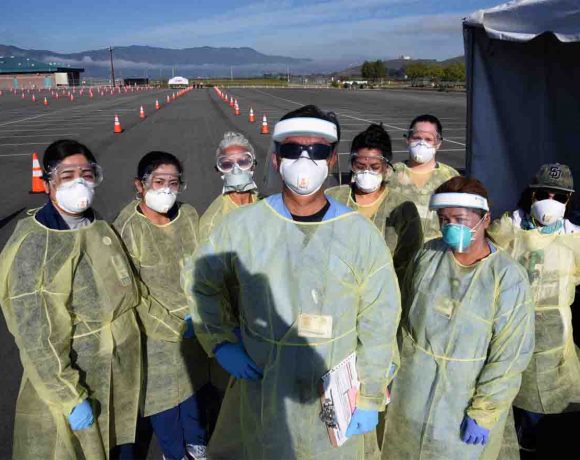

Ukraine: War has an impact on people’s health beyond bullets and bombs.According to the UN human rights office, 136 civilians have died in the war on Ukraine so far. But it acknowledges that the figure is probably much higher.
These deaths may have occurred directly – collateral damage to the fighting – but war affects people’s health beyond bullets and bombs. Some deaths are not combat-related but the result of the wider effects of conflict on public health – effects that linger long after the war has ended. The Russian invasion of Ukraine will undoubtedly bring with it catastrophic suffering and health consequences for the civilian population.
Wars are complex health emergencies. They lead to the breakdown of society, cause considerable damage and destruction to infrastructure, create insecurity and have a significant economic impact. They also exacerbate pre-war issues.
Even before the Russian invasion, the eight-year-long conflict in eastern Ukraine had left 3 million people in need of humanitarian assistance. Women, children, the elderly and people with disabilities, in particular, are often most in need of help.
As we are seeing in Ukraine and its neighbouring countries, war generates mass population movements, both within the country (so-called internally displaced persons) and externally (refugees). In less than a week, the Russian invasion of Ukraine has created nearly half a million refugees. Heartbreaking scenes of families separated, not knowing when or if they will next see each other again, have become commonplace.
Health systems take a hammering
The health system suffers too due to the damage to health infrastructure such as hospitals and clinics. It triggers the flight of health staff, leaving understaffed health systems to cope with growing patient loads caused by the conflict. This is on top of the interruptions to supply chains.
Most hospitals rarely have stocks of drugs and consumables beyond a few days due to storage-space constraints and the cost of keeping large inventories. These stocks are rapidly consumed, particularly items needed for treating war injuries, such as antibiotics, blood products and dressings. Sadly, this is now the case at Chernihiv children’s hospital, which is surrounded by Russian forces and rapidly running out of essential drugs for children with cancer.
The World Health Organization has also warned that medical oxygen supplies in Ukraine are dangerously low.
It will be immensely difficult to deliver healthcare in Ukraine, and the full extent of disruption to the health system will be difficult to ascertain, especially as IT systems will also have been affected. This is further compounded by the ongoing surge in COVID, with around 1,700 patients currently in hospitals across the country.
Beyond hospitals, primary care, screening and immunisation programmes will have been disrupted. This means that people with chronic diseases such as diabetes or heart failure may not get optimal treatment – if any at all. The cessation of screening programmes means cancers are missed or diagnosed late.
The risk of infectious diseases spreading is also heightened if the supply of clean water and functioning sanitation systems are compromised. And the disruption of immunisation programmes, leading to lower vaccine coverage, increases the risks of outbreaks of vaccine-preventable diseases such as measles and polio. The Syrian conflict, for example, substantially reduced polio vaccine coverage, which led to an outbreak of polio in 2017.
As in peacetime, wars do not affect all population groups equally. For instance, women are particularly vulnerable when fleeing conflict zones because of the disruption of protective social networks and the loss of access to healthcare. More worrying is the risk of sexual violence such as rape. The conflict in Yemen, for example, led to a significant increase in reports of gender-based violence.
Ukrainian refugees arrive at one of the refugee camps in Chisinau, Moldova
Women fleeing conflict zones are particularly vulnerable. DUMITRU DORU/EPA
Wars will leave many scarred and disabled. But wars do not just cause physical harm, they can also have considerable mental health consequences, ranging from depression and anxiety disorders to post-traumatic stress disorder. They can affect both combatants and non-combatants, children and adults, on those left behind, as well as on internally displaced people and refugees. Wars can lead to significant psychological trauma, especially in children.
Economic sanctions
Sanctions have been imposed on Russia, but they don’t have a great track record of success. Usually, the effect of sanctions is experienced most by civilians. For example, ten years of economic sanctions on Iraq in the 1990s did not remove Saddam Hussein from power but was linked to an increase in deaths in children under the age of five.
Economic sanctions may create social disruption and material deprivation, as well as reduce the availability of drugs, vaccines and spare parts for health equipment. Prolonged economic sanctions on Russia will hurt ordinary citizens but probably leave the ruling elite relatively unscathed.
After wars, both economic losses and diseases are highly persistent. They don’t stop once the fighting stops. The post-war period is often characterised by insecurity, political fragility, damaged and degraded infrastructure, limited healthcare capacity and staffing, unemployment, and shortages of all manner of goods. There will be residual effects on the economy, as well as disrupted family and social networks.
There will also be the urgent task of clearing unexploded ordnance, including mines. Unexploded ordnance from the Vietnam war, for example, continues to maim civilians decades later.
When the fighting stops, there will be the need for disarmament and demobilisation of former combatants, and the important task of reintegration. The post-war period will last many years, and Ukraine will undoubtedly need considerable international support and funding to rebuild and recover afterwards.
Wars are complex and lead to the breakdown of society, infrastructure damage, and economic impacts. Although it’s too early to tell what consequences will occur in the wake of disruption, healthcare systems will likely take a huge hit.
From medical supply chain interruptions to understaffed hospitals, here’s how the conflict between Russia and Ukraine will impact healthcare.
The Suffering of Healthcare Systems in Ukraine
Healthcare systems will be impacted due to the infrastructural breakdown of hospitals and clinics – triggering hospital staff to flee and leaving hospitals to cope with growing patient care. Furthermore, hospitals may have stocks of drugs and other consumables, but not beyond a few days of inventory. This is mainly due to storage-space limitations and the costs of preserving large stockpiles.
Unfortunately, war can cause rapid consumption of particular supplies needed to treat injuries such as wound dressings, needles, and antibiotics. This is also the case for Chernihiv children’s hospital, where patients battle cancer but are surrounded by Russian forces – and it’s running out of food and painkillers.
Beyond hospitals, the disruption of primary care, screening, and immunization has occurred. Meanwhile, the risk of spreading infectious diseases increases if the clean water supply and sanitation systems are compromised.
IT Systems Are Vulnerable
Ukraine will have difficulty delivering healthcare services, especially since cyberattacks have affected IT systems. Such attacks include distributed denial-of-service (DDoS), malware, ransomware, and website defacements.
Some experts are warning there could be disruptive cyberattacks on those in the health and public sectors of the U.S. and other countries. For the healthcare industry, the average cost of a data breach was $9.42 million in 2021.
Every organization must prepare for disruptive cyberattacks, no matter what size. This is especially important for small entities supporting the medical supply chain infrastructure since small organizations are particularly vulnerable to attack. These would include third-party logistics, freight deliverers, and port authorities. Consequently, these attacks could affect healthcare systems and suppliers.
Essentially, the countries of a post-Cold War era are slowly accepting that this invasion could introduce a domino effect – and there are risks when it comes to relying on the global economy.
However, as more countries believe in the possibilities, things will change. Companies could start carrying out relocations, moving their supply chains closer to Russia.
Delayed Production and Transportation of Supplies
If imports come from Asia to Europe, airfreight can no longer fly over Russia. Airfreight and ocean deliveries have to revise their routes or rely on slower, more costly modes of transportation. As air cargo prices have already heightened, rerouting costs will rise even higher.
Ports are seeing a large amount of congestion, meaning medical supplies are trapped and there’s an increase in container backlogs.
As there is an anticipation of delays, worldwide factories have halted or delayed production. These conflicts may not bring immediate difficulties to the U.S. healthcare system. However, long-term disruptions are possible. With the U.S. dependent on medical supply imports, the conflicts reveal long-term structural issues.
Raw Materials and Medical Supply Chain Disruptions
Much of the world’s supplies of raw materials to make hospital equipment come from Russia and Ukraine’s crude oil, natural gas, and certain metals. As U.S. healthcare organizations depend on common raw materials, a rise in prices for medical supplies is possible. Russia produces 12% of the world’s oil and 17% of its natural gas supply. Disruptions to production are anticipated, which may directly strike the global supply chain and pricing of plastics.
Once the supply chain is interrupted from the invasion, European countries will have to scramble and find other suppliers. As a result, natural gas prices will be affected even further. Manufacturers that buy the raw materials will have the ability to raise their prices to cover the expenses. However, healthcare facilities will have to take the impact, along with their customers.
Handling the Long-term Effects
These conflicts are disrupting healthcare supply chains and causing medical supply price spikes, and health systems will have to bear the cost. The industry’s only solution is to rethink how to mitigate these risks in the future through automation, reshoring, and other supply chain-bolstering techniques.


















